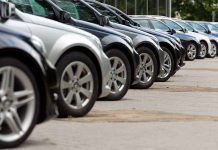
Arizona’s approval of Tesla’s robotaxi ride-hailing service signals a dramatic shift toward tech-driven transportation, raising questions about safety, regulatory oversight, and the future of American jobs.
Story Snapshot
- Arizona granted Tesla a permit to launch ride-hailing robotaxis, making it the third state after Texas and California to do so.
- State regulations still require safety drivers, preventing fully autonomous operation.
- Arizona’s regulatory strategy prioritizes rapid innovation over strict oversight, challenging traditional approaches.
- Tesla’s phased rollout could reshape local economies and influence national policy on autonomous vehicles.
Arizona Accelerates Autonomous Vehicle Approvals, Setting National Precedent
On November 17, 2025, the Arizona Department of Transportation (ADOT) approved Tesla’s application to operate a ride-hailing service using its robotaxi fleet. This move puts Arizona in the spotlight as the third state to welcome Tesla’s autonomous vehicle initiative, following Texas and California.
The state’s regulatory framework stands out as notably more accommodating than most, allowing Tesla to secure permission for ride-hailing with fewer bureaucratic hurdles. For conservative Americans, Arizona’s pro-innovation stance highlights a common-sense approach that favors economic growth and technological leadership over government overreach.
Arizona’s requirements focus primarily on basic safety and insurance compliance rather than exhaustive pre-approval processes. By granting Tesla a Transportation Network Company (TNC) permit, the state has positioned itself as a national leader in autonomous vehicle testing.
This decision enables Tesla to expand its robotaxi service, though the current mandate for safety drivers means full autonomy remains a future goal. The phased strategy aligns with concerns about public safety and accountability, reflecting a pragmatic balance between innovation and responsibility.
Tesla’s Phased Rollout: Safety Drivers Remain Mandatory
Tesla’s approach in Arizona requires each robotaxi to operate with a trained safety driver behind the wheel. This measure is intended to reassure the public and regulators about the reliability of autonomous technology. While Tesla’s CEO Elon Musk has promised robotaxi services as a central part of the company’s vision, regulatory delays and safety concerns have slowed full deployment in other states.
Arizona’s willingness to approve pilot programs with safety drivers allows Tesla to gather crucial operational data and build public trust, while still keeping a human in control should anything go wrong. This incremental progress reflects both the promise and limitations of current technology.
Conservative voters, who value limited government and practical risk management, may appreciate Arizona’s cautious yet forward-thinking model. By refusing to rush into fully driverless operations, the state minimizes the kind of regulatory experimentation that has failed elsewhere and instead prioritizes concrete results and accountability. Local residents now have access to new mobility options, but with safeguards in place to protect communities and uphold public safety standards.
Economic and Social Impacts: Competition, Jobs, and Safety Concerns
The introduction of Tesla’s ride-hailing service is poised to disrupt the local transportation market, creating competition for established players like Uber and Lyft. This increased competition could drive down prices and improve service quality for consumers.
However, the shift toward semi-autonomous vehicles will inevitably affect employment for traditional ride-hailing drivers, raising important questions about job displacement and economic transition. For Arizona communities, the challenge lies in balancing innovation with the preservation of livelihoods and traditional values.
The conservative perspective emphasizes the need for policies that support American workers while embracing technological progress that benefits families and the economy.
Safety remains a top concern. While experts praise Arizona’s regulatory pragmatism, transportation scholars caution that widespread adoption of autonomous vehicles depends on public acceptance and robust safety records. Some critics warn of unresolved issues related to liability and trust in new technologies, underscoring the importance of transparency and continued oversight.
Arizona’s leadership may inspire other states to reconsider their own regulatory frameworks, but the debate over how best to safeguard the public and preserve constitutional rights will continue.
Industry Influence and National Policy Implications
Tesla’s regulatory breakthrough in Arizona could accelerate similar reforms across the country, especially in states seeking economic growth through tech innovation. The approval is likely to spur investment and competition in the autonomous mobility sector, encouraging policymakers nationwide to weigh the benefits and risks of rapid deployment.
Arizona’s example challenges the federal government and other states to streamline their own processes, reduce unnecessary red tape, and place trust in American ingenuity—principles that resonate with conservative values. The outcome of Tesla’s Arizona pilot may well shape the future of mobility and regulatory policy for years to come.
As Tesla moves forward, questions remain about the timeline for fully driverless operations and the long-term impact on the workforce. For now, Arizona’s bold yet measured actions set the stage for ongoing debate and innovation, with conservative Americans watching closely to ensure that progress does not come at the expense of safety, jobs, or constitutional freedoms.
Sources:
Tesla receives ride-hailing permit in Arizona: last required step to launch
Tesla robotaxi expanded access: Arizona permit
Tesla gets Arizona ride-hailing permit as firm accelerates robotaxi expansion
Tesla secures ride-hailing permit: Arizona robotaxi service
Tesla receives permit to operate ride-hailing service in Arizona
Tesla gains approval: ride-hailing service in Arizona





